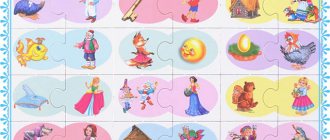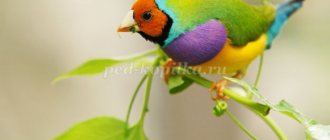WORK PROGRAM for theatrical activities in the senior group
Transcript
1 Municipal budgetary preschool educational institution kindergarten 1 Considered Approved at a meeting of the pedagogical order of the council of MBDOU 1 dated 0 minutes. Head of MBDOU 1 from 0. Yu.A. Lakhtina WORK PROGRAM for theatrical activities in the senior group Compiled by: Dyagileva N.G. senior teacher Andreeva N.V. — teacher Based on the program: M.D. Makhaneva Classes on theatrical activities in kindergarten. Creative Moscow, 007. Armavir 015
2 Explanatory note Modern pedagogy is gradually becoming developmental from didactic. What is meant by this? First of all, not only psychologists, but also practicing teachers begin to realize and see the results of their educational activities in the development of the personality of each child, his creative potential, abilities, interests. In this regard, it is impossible to overestimate the role of the native language, which helps children consciously perceive the world around them and is a means of communication. To develop the expressive side of speech, it is necessary to create conditions in which each child could express his emotions, feelings, desires and views, not only in ordinary conversation, but also publicly. The habit of expressive public speech can be cultivated in a person only by involving him in speaking in front of an audience from an early age. Theatrical activities can be of great help with this. They always make children happy and are always loved by them. Theatrical activities allow you to develop the experience of social behavior skills due to the fact that every literary work or fairy tale for children always has a moral orientation (friendship, kindness, honesty, courage, etc.). Thanks to a fairy tale, a child learns about the world not only with his mind, but also with his heart. And he not only knows, but also expresses his own attitude towards good and evil. Theatrical activities allow the child to solve many problematic situations indirectly on behalf of a character. This helps overcome timidity, self-doubt, and shyness. Thus, theatrical activities help to develop the child comprehensively. This program describes a training course in theatrical activities for preschool children - middle group. It was developed on the basis of the mandatory minimum content for theatrical activities for preschool educational institutions, taking into account the updating of content for various programs described in the literature given at the end of this section. The goal of the program is to develop children's abilities through theatrical art. Objectives 1. Create conditions for the development of creative activity of children participating in theatrical activities. Improve the artistic skills of children in terms of experiencing and embodying the image, as well as their performing skills.
3. To form in children the simplest figurative and expressive skills, to teach them to imitate the characteristic movements of fairy-tale animals.. To teach children the elements of artistic and figurative means of expression (intonation, facial expressions, pantomime). 5. Activate children’s vocabulary, improve the sound culture of speech, intonation structure, and dialogic speech. 6. To develop experience in social behavior skills and create conditions for the development of children’s creative activity. 7. Introduce children to various types of theater (puppet, musical, children's, animal theater, etc.). 8. To develop children's interest in theatrical and play activities. Lesson duration 15 minutes. Thematic plan month Lesson topic September 1 Introductory “I will change myself friends, guess who I am” Basic program First visit to the circle Conversation with children. Dressing up in costumes. Imitation studies. Preschool educational institution component Introduction to Russian folk costumes October 1 “Understand me” “Games with Grandma Zabavushka” “Kolobok is not the same, but another” Guessing riddles. Conversation. Game exercises. Creating gaming motivation. Games and exercises “Announcer”, “Pretend to be a hero”. Games and exercises to create gaming motivation. Guessing riddles, with sketches of their heroes. Showing and telling the transfer of fairy tale images by the teacher (image with then children using facial expressions, gestures). “Our gingerbread man, our prickly gingerbread man”
4 November 1 prickly side” “It’s very difficult to live in the world without a girlfriend and without a friend” “Slant bragged, laughed, almost got caught by the fox” “The fox would have eaten the hare if it weren’t for his friends” side” Conversation about friends. "Best friends". Guessing riddles based on the content of the fairy tale. Sketches for the transfer of the image. children "Best Friends". General dance. Game “Say a kind word about a friend.” Showing a fairy tale to the children of your group “Best Friends” “Best Friends”. Mimic sketches at the mirror (exercises on movements). December 1 “This is how I can do it” “In cramped conditions, but don’t be offended” “Give me time, we’ll build a tower” Game “What I can do.” Reading the poem by B. Zakhoder “This is how I can do it.” Guessing riddles.. Fun dance. Guessing riddles based on fairy tales. Imitation exercises to music. Fun dance. Imitation game "Guess who I'm talking about." Consider the national Ukrainian costume, its differences and similarities with the Russian one. “Oh, a beautiful little teremok, it’s very, very tall” “Teremok” A Ukrainian woman telling the fairy tale “The Mitten”
5 Showing the fairy tale “Teremok” to the parents of your group. January 1 “Game lesson” Sketches of movements. Sketches on basic emotions. February 1 “The bunny let the fox into the house, he shed a lot of tears, then shed” “Who would help the bunny?” Showing the fairy tale “Zayushkina’s Hut” to children. “The puppy was sleeping near the sofa, suddenly he heard a “meow” nearby.” Telling the Russian folk tale “Zayushkina’s Hut.” Pantomime sketches. Telling the Russian folk tale “Zayushkina’s Hut” by children with the help of a teacher. V. Suteeva “Who said “meow”?” Enrich your vocabulary: icy, bast Pantomime game “Guess who I’ll show you.” Pantomime sketches (a mischievous puppy, a proud cockerel, a timid mouse, an angry dog) “Only “meow” where can I find it?” “Didn’t you say meow?” V. Suteeva “Who said “meow”?” children with the help of a teacher. Pantomime game "Guess who said it?" Pantomime game “Guess who you met. Exercise in intonation of dialogues.
6 puppy? March 1 “The ill-mannered mouse was left alone, without friends” “The mouse turned out to be stupid, he refused his mother” “The Tale of the ill-mannered mouse” Reading the poem “Kind words”. Game "Say a polite word." Telling the fairy tale “The Tale of the Ill-mannered Mouse.” Problematic situation. Conversation on the content of the fairy tale. Work on performance (expressiveness of emotions of sadness and joy) Preparation for dramatization. A Tale of a Smart Mouse"" Game on intonation of polite words. children. A game on the intonation of polite words (hello, goodbye, thank you, excuse me, joyfully, affably, casually, gloomily, confidently, politely.) April 1 Showing the fairy tale “Stubborn Hedgehogs” to mothers A surprise moment. Telling a story about two hedgehogs. Conversation. Coming up with an ending to the story and displaying it on a screen. “Like an apple” by V. Suteev “Apple”. Simulation exercises. Khakass folk tale “The Fox's Feast” A game of facial expressions. Consideration
7 May 1 “The little animals quarreled, they don’t know what to do, how to divide this apple among everyone” “Mikhailo Ivanovich, judge, make peace for us little animals” “Everyone wants to hide under a small mushroom” Musical riddle. Consideration of the distinctive features of the heroes of V. Suteev’s fairy tale “The Apple”. Acting out sketches and dialogues from fairy tales. Surprise moment. Telling and acting out V. Suteev’s fairy tale “The Apple” with the help of a puppet theater.. A surprise moment is a mystery. Telling the fairy tale by V. Suteev “Under the Mushroom”. illustrations, Khakass musical instruments, their characteristic features. Competition game “Ask to be under the mushroom” “It rains and pours, but the mushroom keeps growing” “Like a giant mushroom, there was enough room for everyone” Showing a fairy tale to parents and children “under the mushroom” Making riddles. Examination of illustrations for the fairy tale “Under the Mushroom”, conversation about them. Imitation game “Guess who asked to go under the mushroom” by V. Suteev “Under the mushroom”. Dance of heroes. Imitation game “Understand Me.” Contents of the program: The program is designed taking into account the implementation of interdisciplinary connections across sections. 1. “Artistic and aesthetic development” - children learn to hear an emotional state in music and convey it through movements, gestures, facial expressions, note the diverse content of music, which makes it possible to more fully appreciate and understand the character of the hero, his image. Get acquainted with reproductions of paintings,
8 fairy tales that are similar in content.. “Speech development” - in which children develop clear, clear diction, work is being done on the development of the articulatory apparatus using tongue twisters, tongue twisters, and nursery rhymes. They get acquainted with literary works that will form the basis for the upcoming production of the play. 5. “Cognitive development” - where children become acquainted with the phenomena of social life, objects of the immediate environment, natural phenomena, which will serve as material included in the content of theatrical games and exercises. Requirements for the level of training. Must be able to: engage in theatrical and play activities with interest; perform simple performances based on familiar literary plots, using expressive means;” (intonation, facial expressions, gesture); use figurative toys made independently from different materials in theatrical games; Depict answers to riddles using expressive means; perform in front of parents, children of your group, kids with performances. Must know: some types of theaters (puppet, dramatic, musical, children's, animal theater, etc.); some techniques and manipulations used in familiar types of theaters: rubber, plastic, soft toys (puppet), tabletop, tabletop-planar, cone toys, stand on flannelgraph and magnetic board. Literature 1. Mikhailova M.A. Holidays in kindergarten. Scenarios, games, attractions. Yaroslavl, 00.. Naumenko G.M. Folklore festival in kindergarten and school. M., Petrova T.I., Sergeeva E.A., Petrova E.S. Theatrical games in the kindergarten. M., Polyak L. Theater of Fairy Tales. St. Petersburg, Makhaneva M.D. Classes on theatrical activities in kindergarten. Creative Moscow, 007.


